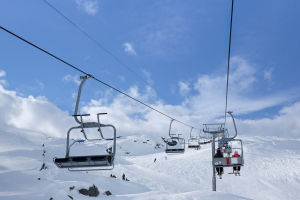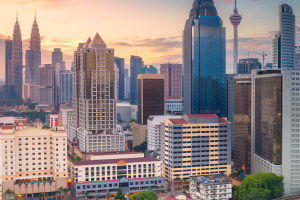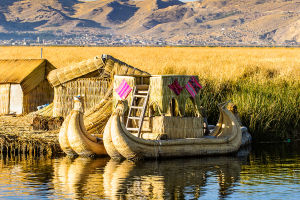Lykkers, get ready to be dazzled by nature's most enchanting seasonal shows! All over the world, flower fields come to life with bursts of color and fragrance that transform landscapes into living paintings.
From Italy's sun-drenched hills to Japan's glowing forests and the Netherlands' iconic tulip gardens, here's a carefully selected list of where to experience the most spectacular flower blooms, what to expect, and how to make the most of your visit.
Wisteria in Tuscany, Italy
Where It Is: The most famous spot to admire wisteria in bloom is the garden of Villa Bardini in Florence, Tuscany.
When to Go: Late April is the prime time to visit.
What to Expect: Cascading clusters of pale violet flowers, ideal for photos and quiet strolls.
How to Get There: Reach Florence by train from major Italian cities, then walk or take a local bus to Villa Bardini.
What to See and Do: Walk through the garden's blooming pergola, explore the villa, and enjoy panoramic city views.
Opening Hours & Tickets: Open daily, usually 10 AM to 6 PM. Entry to Villa Bardini garden is around €10.
Where to Stay: Central accommodations start at €90 per night for a mid-range hotel or B&B. Florence also offers boutique hotels with garden views.
Lavender Fields in Tuscany, Italy
Where It Is: Notable locations include Val di Luce (Pisa province), Montespertoli, and Luco di Mugello near Borgo San Lorenzo.
When to Go: June through July.
What to Expect: Vibrant purple fields with intense fragrance and serene countryside views.
How to Get There: Best accessed by car from Florence or Pisa.
What to See and Do: Enjoy peaceful walks among the lavender, picnic in designated areas, and take photos at sunset.
Opening Hours & Tickets: Fields are often free to enter, but some private farms may charge €3–€5.
Where to Stay: Agriturismi (farm stays) nearby offer rooms starting at €70 per night, often with breakfast included.
Sunflower Fields in Tuscany, Italy
Where It Is: Mugello and Gambassi Terme in the Florentine hills.
When to Go: Between July and early August.
What to Expect: Expanses of golden-yellow blooms turning toward the sun.
How to Get There: Travel by car is recommended; buses are available but less frequent.
What to See and Do: Walk through the fields, take panoramic shots, and visit nearby hill towns.
Opening Hours & Tickets: No entry fee; best visited in the morning or golden hour for photos.
Where to Stay: Country hotels and guesthouses cost around €60–€85 per night.
Canola (Rapeseed) Fields in Tuscany, Italy
Where It Is: Common in the Crete Senesi region.
When to Go: April.
What to Expect: Rolling hills blanketed in bright yellow flowers under clear skies.
How to Get There: Drive from Siena or Florence for best access.
What to See and Do: Explore the hills by foot or bike, and combine the trip with nearby medieval towns.
Opening Hours & Tickets: Free access to most fields; some guided tours available.
Where to Stay: Nearby farmhouses start from €75 per night, offering scenic countryside views.
Flower Bloom in Castelluccio di Norcia, Umbria
Where It Is: Inside the Monti Sibillini National Park.
When to Go: Late May to mid-July.
What to Expect: A changing mosaic of yellow, red, violet, blue, and white hues, due to diverse crops.
How to Get There: Drive from Norcia or take part in organized day tours from Perugia.
What to See and Do: Walk across the plateau, enjoy the dramatic scenery, and stop at local stalls selling lentils.
Opening Hours & Tickets: Always open; no ticket required. Traffic restrictions may apply in peak bloom season.
Where to Stay: Lodging in Norcia averages €60–€95 per night. Book early for bloom season.
Tulip Fields at Keukenhof, Netherlands
Where It Is: Lisse, around 40 minutes from Amsterdam.
When to Go: From late March to mid-May.
What to Expect: Over 7 million tulips bloom in manicured gardens and open fields.
How to Get There: Take a direct bus from Amsterdam Schiphol Airport or join a shuttle + entry package.
What to See and Do: Visit themed gardens, enjoy flower shows, and see the famous windmill.
Opening Hours & Tickets: Open from 8 AM to 7:30 PM. Entry ticket is €19. Shuttle packages start at €35.
Where to Stay: Lisse offers quiet stays from €75 per night, while Amsterdam has options from €90 and up.
Japanese Maple Foliage in Japan
Where It Is: Nationwide, with top spots in Kyoto, Nikko, and Shirakawa-go.
When to Go: October through November.
What to Expect: Forests and gardens cloaked in fiery tones of orange and red.
How to Get There: Take the fast train (Shinkansen) or express buses to key foliage destinations.
What to See and Do: Stroll through temples and gardens, enjoy scenic viewpoints, and savor local autumn treats.
Opening Hours & Tickets: Most parks and gardens are open from 9 AM to 5 PM. Entry fees vary, from free to around €4.
Where to Stay: Traditional ryokans (guesthouses) range from €60–€150 per night, often including meals and hot spring access.
In Conclusion
Nature's floral masterpieces are fleeting but unforgettable. For Lykkers planning a spring or summer getaway—or even a dreamy autumn escape—these bloom destinations offer the perfect blend of scenic beauty, cultural charm, and peaceful moments. From Tuscany's rolling fields to Japan's fiery leaves, each location promises a unique visual experience and a refreshing connection with the natural world.


